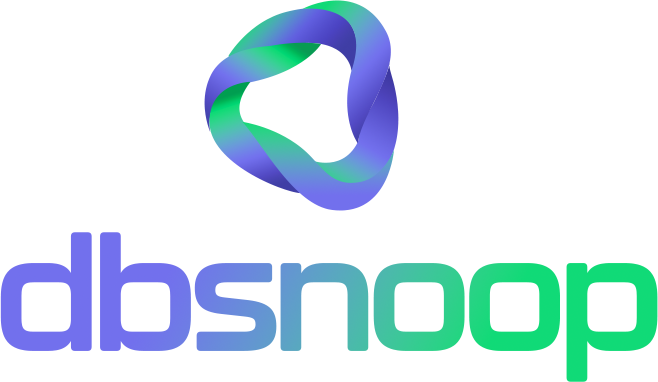

In a mature CI/CD pipeline, the application code is subjected to a rigorous automated validation process: unit tests, static analysis, integration, and security tests. However, in most organizations, the database layer remains a black box, treated as a passive component that is only functionally validated. The performance implications of a new schema migration or a query change are only discovered late, in staging environments or, in the worst-case scenario, in production.
This operational model is a primary source of technical and business risk. The dissociation between the application development lifecycle and the performance analysis of the data layer leads to an accumulation of “performance debt” that invariably results in incidents, degradation of the user experience, and high-cost emergency correction cycles. The solution is the application of the Shift-Left principle to the database: integrating performance analysis as a mandatory quality gate within the CI/CD pipeline itself.
Implementing this strategy requires more than tools; it requires deep expertise in database administration to build, automate, and, crucially, interpret the results of these tests. HTI Tecnologia, a specialist in performance, availability, and security for SQL and NoSQL databases, designs and supports data infrastructures where performance analysis is a continuous and proactive process, not a reactive event.
This technical guide describes five fundamental steps to integrate database performance analysis into your CI/CD pipeline, transforming your deployment process and preventing performance bottlenecks from reaching production.
The Broken Paradigm: Why CI/CD for Applications Is Not Enough
The agility provided by modern CI/CD pipelines for stateless applications does not directly translate to the data layer, which is, by nature, stateful. The failure to recognize this fundamental distinction is the root cause of many performance problems.
- State Complexity: Unlike an application container that can be replaced, the state of the database is persistent. Each release carries the cumulative history of all previous schema migrations, increasing complexity with each deployment.
- Late Detection: Without tests in the pipeline, a code change that introduces an inefficient query is only detected when production data volumes expose the problem. At this point, the cost and complexity of the fix are orders of magnitude greater.
- Operational Conflict: The “developers create, DBAs fix” cycle generates friction and slowness. Integrating performance analysis into CI/CD makes developers aware of the impact of their changes in real time, promoting responsibility and collaboration.
The absence of performance quality gates for the database in the pipeline is a procedural failure that nullifies many of the speed and security benefits that CI/CD aims to offer.
The 5 Pillars of Database Performance Analysis in the Pipeline
Integrating data analysis into CI/CD means automating a series of checks that run with every pull request or commit, providing fast feedback to the developer.

1. Schema Migration Validation
Every change to the database schema (DDL) must be treated as application code and validated. Automation at this stage focuses on preventing structural errors before they are applied.
- DDL Linting Analysis: Use tools to check syntax and adherence to standards. For example, ensuring that every new table has a primary key or that the data types used are efficient.
- Detection of Dangerous Changes: The pipeline should be able to identify and flag high-risk operations, such as adding a column with a DEFAULT value to a large table (which can cause a prolonged block) or removing an existing index.
- Index Validation: Automate the check to ensure that new foreign keys have their respective indexes created on the reference table to avoid inefficient lookups.
2. Static SQL Code Analysis
Just as application code is analyzed, SQL queries (DML) must be subjected to static analysis to identify known anti-patterns that lead to performance problems.
- Anti-pattern Identification: Configure rules to flag the use of SELECT *, queries without a WHERE clause, or the use of functions on indexed columns, which prevents the use of the index.
- Enforcing Best Practices: The pipeline can enforce rules such as the mandatory use of explicit JOINs instead of the old syntax with commas in the FROM clause.
3. Query Execution Plan Analysis
This is the most critical step. The execution plan is the map of how the database intends to execute a query. Analyzing it reveals the real efficiency of the query.
- Automatic Plan Generation: The pipeline should extract new or modified queries from a pull request and run the EXPLAIN command (or its equivalent) against a test database that contains a subset of production data.
- Detection of High-Cost Operations: Configure the pipeline to fail if an execution plan contains inefficient operations, such as Full Table Scans on large tables or costly filesorts.
- Regression Prevention: Store the execution plan of the main version of the code and compare it with the plan of the new feature branch. The pipeline can alert or fail if the new plan is significantly more costly than the original.
4. Load Testing in Ephemeral Environments
To validate the impact of changes in a transactional environment, they must be subjected to a realistic workload.
- Test Database Creation: The pipeline should provision a container (Docker) with the database (e.g., PostgreSQL, MySQL) and apply the migrations up to the desired version.
- Realistic Data Generation: Populate this database with an anonymized and statistically representative volume of production data.
- Execution of Targeted Tests: Run a set of load tests that simulate the specific workload of the queries and transactions affected by the code change. The key metrics (latency, throughput, IOPS) are captured.
5. Baseline Generation and Performance Regression Detection
The final step is to compare the results of the load tests with a known performance standard to make a pass/fail decision.
- Baseline Establishment: The pipeline runs the same set of load tests against the main or release branch to establish a performance baseline.
- Comparative Analysis: The metrics of the feature branch are compared with those of the baseline.
- Definition of Quality Gates: The build fails automatically if a performance regression above a predefined threshold is detected (e.g., 10% higher latency, 5% lower throughput). This immediate feedback forces optimization before the merge.
The Argument for Specialization: Where Automation Reaches its Limit
Building a pipeline as described above is a significant technical challenge. However, the greater challenge is not in the automation, but in the interpretation. A tool can flag that an execution plan has regressed, but it cannot explain why.
- Is the cause a stale statistic?
- Is it a missing or poorly designed index?
- Is the problem lock contention due to the transaction’s isolation level?
- Is the schema architecture becoming a bottleneck for the new workload pattern?
Answering these questions and designing the correct solution (whether it’s rewriting the query, adding an index, or restructuring the data) requires the expertise of a senior DBA. This is where automation ends and specialized analysis begins.
This is why outsourcing database management with a partner like HTI Tecnologia is a strategic decision. Our team of experts not only designs and implements CI/CD pipelines for databases but also provides the layer of intelligence needed to analyze the results and solve the complex problems that automation reveals.
- Technical Focus and Risk Reduction: Our DBAs have in-depth expertise in a vast ecosystem of databases (from Oracle and SQL Server to PostgreSQL, MongoDB, and Redis). We free your development team to focus on business logic while we ensure the data layer is performant and scalable.
- 24/7 Operational Continuity: Automation prevents many problems, but not all of them. With our 24/7 Support and Sustaining service, you are guaranteed that an expert will be available to act on any performance incident, at any time.
Transforming the Database from a Bottleneck into an Accelerator
Integrating database performance analysis into the CI/CD pipeline is not a luxury; it is a fundamental requirement for organizations that depend on fast and reliable applications. Treating the database as a first-class citizen in the development and deployment process is the only way to move problem detection from production to development.
Automation provides the data. Expertise transforms that data into engineering decisions that ensure the system’s performance and stability.
Is your CI/CD pipeline blind to your database’s performance problems? Schedule a conversation with one of our specialists and integrate data performance analysis into your development cycle.
Schedule a demo here.
Learn more about dbsnOOp!
Learn about database monitoring with advanced tools here.
Visit our YouTube channel to learn about the platform and watch tutorials.

Recommended Reading
- PostgreSQL Indexing Guide: Common Mistakes and How to Fix Them: This article details the most common anti-patterns in PostgreSQL indexing strategies. The reading is fundamental to understanding the root cause behind inefficient execution plans, allowing development and SRE teams to configure quality gates in the CI/CD pipeline that proactively identify and prevent these errors before they reach production.
- Slow or Unavailable Database? Understand the Connection and How to Avoid the Next Crisis: Explore the direct correlation between performance degradation and total system unavailability. This article demonstrates how unresolved slowness problems escalate into critical incidents, reinforcing the need to integrate performance analysis at the beginning of the development cycle (shift-left) to ensure business continuity and avoid operational crises.
- Why Is My Cloud Database So Expensive?: This article establishes the direct connection between database performance and cloud infrastructure costs. Learn how inefficient queries and poorly planned schemas generate excessive resource consumption (I/O, CPU), inflating expenses. The reading is essential to justify the investment in CI/CD quality gates from a FinOps perspective, treating code optimization as a cost control tool.

